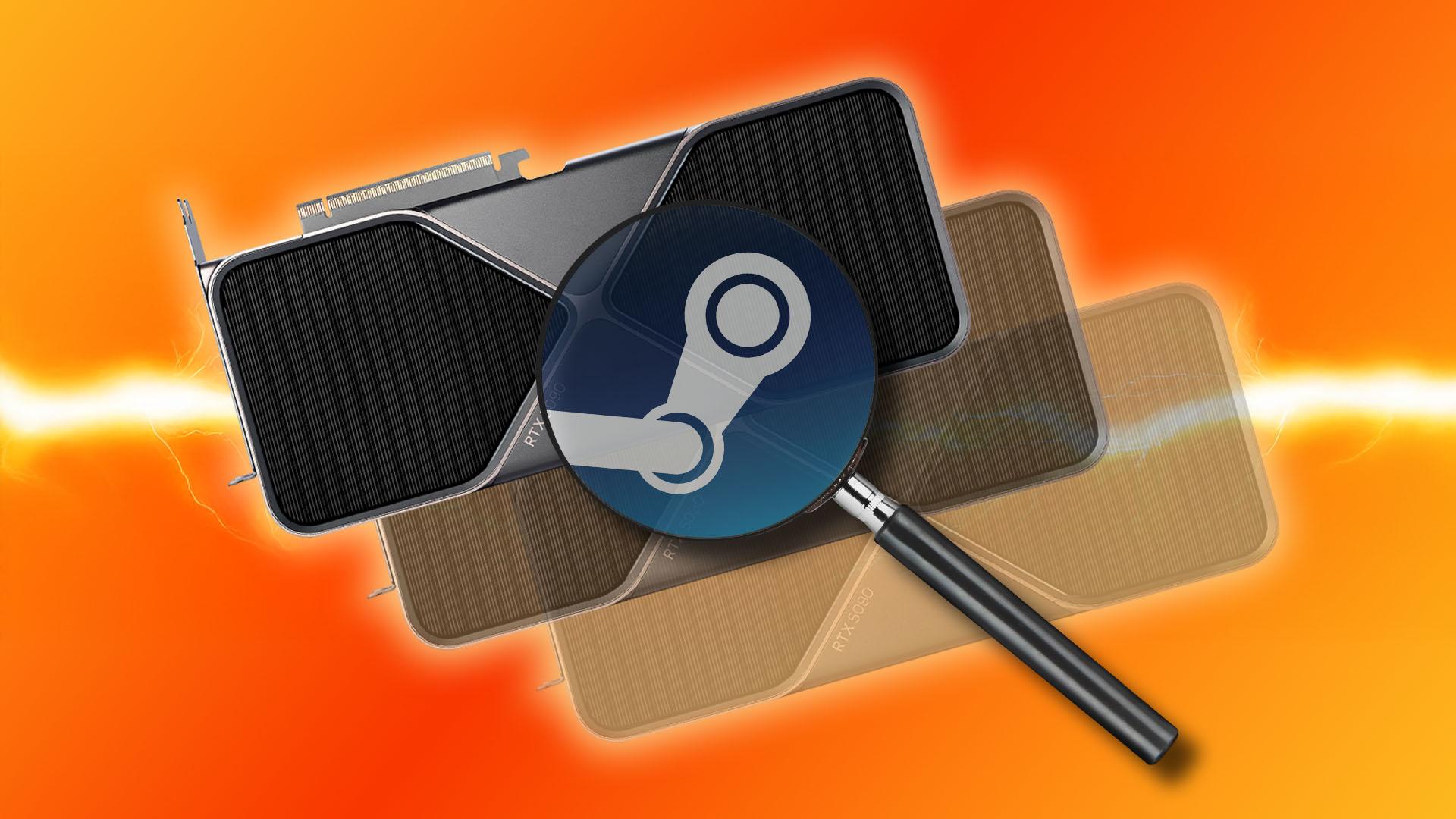
A new Steam update enables PC gamers to analyze the frame rate generated by their gaming GPU, and it comes with one particularly handy feature if you use frame gen, either through Nvidia DLSS or AMD FSR. The new Steam Performance Monitor doesn't just report the average frame rate from your graphics card while you're gaming, but it also separates the figures if you're using frame gen, so you can see the "real" frame rate rendered by your GPU, as well as the "fake" higher one using frame gen.
I've just had a quick play with the new Steam feature in Marvel Rivals, while using my Nvidia RTX 4090 GPU with frame gen enabled, and it provided some interesting live data. As you can see in the image below, the frame rate while using frame gen is clearly labeled "DLSS" at the start as 236fps, but straight after that, you can see the real underlying frame rate is 117fps. All the GPUs in our guide to buying the best graphics card support frame gen in one form or another, but the figures aren't always what they seem, and this new tool could be handy if you're trying to diagnose performance problems.
How to enable Steam Performance Monitor
Here's how to enable the Steam Performance Monitor:
- Open the Steam client
- Go to Settings in the Steam menu
- Select Check for Steam Client Updates…
- Update Steam to the latest version
- Go to Settings in the Steam menu again
- Select In Game from the menu on the left
- Scroll down to Overlay Performance Monitor
- Select Show Performance Monitor and choose your screen area for the overlay
- Set a Toggle Performance Monitor key, such as Insert
- Select FPS Details or a higher preset in the Performance detail level box
- Close Steam Settings and start your game

When you first start a game with the Steam Performance Monitor enabled, bear in mind that you'll only see the separate DLSS and FSR frame gen figures once you're actually in the game, as most games don't start frame gen when you're in the game menus or loading screens. You then just need to enable frame gen in your game and start playing to see how frame gen is impacting your frame rate.
As I've found in many of my recent graphics card reviews, frame gen can be a really useful tool to smooth out your frame rate in games, particularly if you have a fast monitor with a high refresh rate. However, it's not a magic fix if your starting point is too slow - if your frame rate is only 15fps, then doubling it to 30fps, or quadrupling it to around 60fps with multi frame gen, will still make for a glitchy game experience, with strange quirks such as disappearing textures, and your game suddenly speeding up when the frame rate catches up.
As a general rule, I consider 60fps to be a solid starting point for enabling frame gen, but this can vary between games. For example, I've found that a base frame rate of 45fps is fine in a game such as Indiana Jones and the Great Circle, where there's not a great deal of fast-paced real-time action. If your frame rate is below 30fps, then enabling frame gen isn't going to help you much, even if the final figure looks good.
In my experience, Nvidia DLSS frame gen also generally works much better than AMD FSR frame gen - in Doom The Dark Ages and Indiana Jones, for example, FSR frame gen makes the frame rate go all over the place - I find the games are better without it. However, AMD has also stated that it's working on a new AI FSR frame gen system that will hopefully come out soon and enable its GPUs to properly compete in this area.
If you're looking for a new graphics card upgrade, check out my new Nvidia GeForce RTX 5060 Ti review, as the 16GB version of this GPU supports multi-frame gen, while also having a decent amount of VRAM and GPU power at its disposal.
You can also follow us on Google News for daily PC games news, reviews, and guides. In addition, we have a vibrant community Discord server, where you can chat about this story with members of the team and fellow readers.




